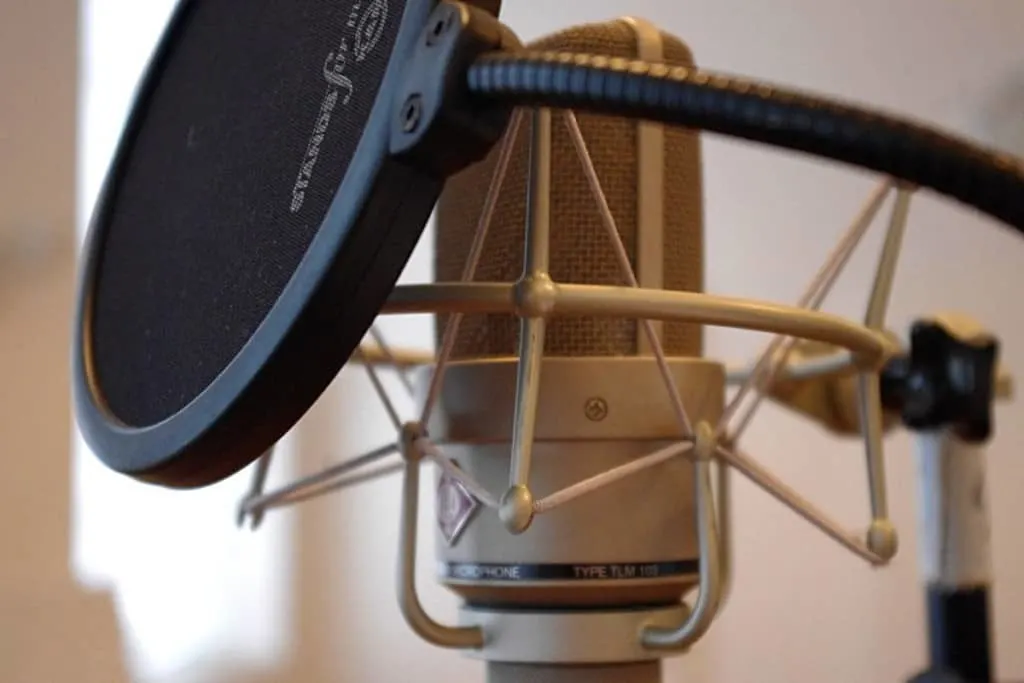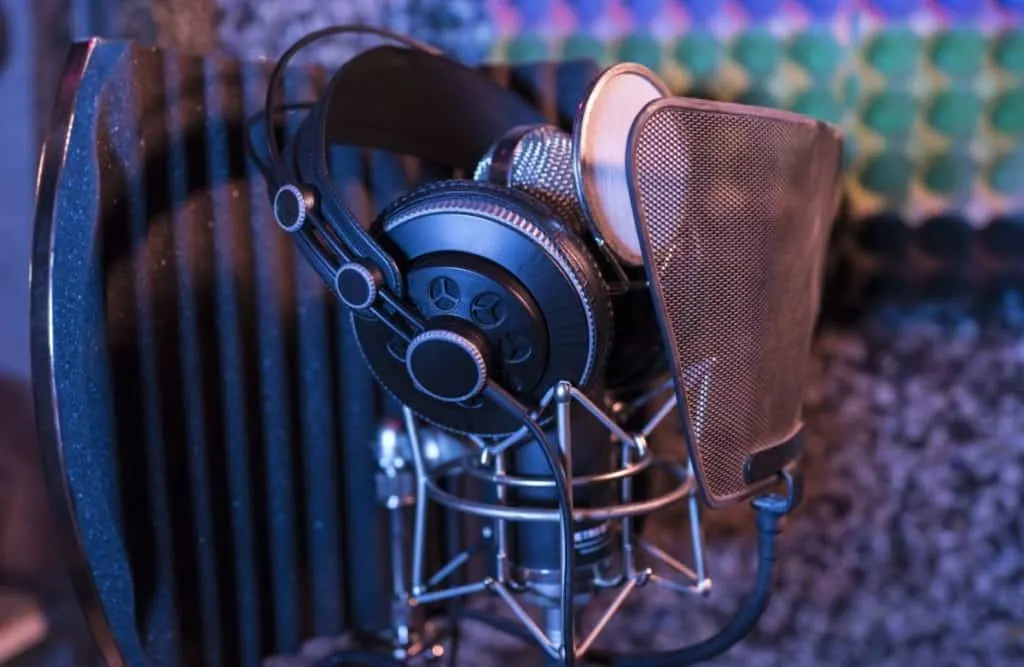Let’s face it, if you have ever even seen a recording studio, you’ve seen pop filters.
Pop filters are a great way to do some corrections and fine-tuning to a singer or a voice-over artist’s voice without even reaching for the computer.
I’ve been inside a recording studio and several radio studios enough to even tell which is better at first glance, and what I discovered is that there are infinite ways to use pop filters to accommodate different voices.
So, can you use 2 pop filters?
It is not only possible to use 2 pop filters, but I also urge you to try it. For some singers and voice-over artists, 2 pop filters are the secret to making their performances completely balanced and flawless. So, yes, you can use 2 pop filters, and, depending on the case, you should at least try it.
For those of us who come from a home recording background, we are very used to reaching for whatever is at hand to fix a certain situation. This is a trick I’ve used extensively throughout my career and think it is worth sharing with you.
Are you ready to learn all my 2-pop-filters secrets? Let’s do this!

What Is A Pop Filter?
A pop filter is a filter or a form of shield and what they do is solve two major problems.
· Microphone overload – The capsule inside your microphone can’t take everything you throw at it; in fact, some microphones are more sensitive than others. When some sounds called “plosives” come out of the mouth they can overload the capsule creating a clipping or popping sound that we can’t fix afterward in the mix.
· Stops The Rain – There is one thing that comes out of the mouth when we speak and sing and that is saliva.
The pop filter we use in the studio or on the radio is also there to protect microphones from the saliva shower singers usually pour while performing. In time, that can damage the microphone.
So, owning at least one pop filter when you are doing recordings is a definite must for you and for the artist. The shield protects the microphone from saliva and also dissipates those strong plosive sounds so once they actually hit the capsule, they will be tamed enough as to be recorded without problems.
Is Using 2 Pop Filters Better Than Only One?
Well, the honest answer on my side is to use 2 pop filters in every vocal take you do at the very beginning. Then you can do a second, a third, and a fourth take without one, but if it sounds good with both, I’d leave them there all the time.
Believe me, I rarely remove one; maybe in the case the singer or voice over artist can use some “breathing” over the microphone or has a very low natural volume.
Take a look here at a related article that discusses recording vocals without a preamp.
Let’s Talk “Plosives”
I named the word “plosives”, but what are they really?
Well, depending on what language you speak and sing in, plosives have the ability to overload your microphone’s capsule. If this happens, the sound clips and pops and you have to redo the take.
The tricky part about plosives is that many times they are part of the artistic expression of the singer or voice over artist. Can you improve someone’s performance by asking them to accentuate less on the “P”? Well, the obvious answer is no.
Whether it is home recording or it is a multi-million dollar studio, the engineer must not tell the artist how to do their job and vice versa.
Instead, what engineers do is to filter the sound using a pop shield or pop filter and not saying anything about it to the artist. Also, these filters can be set to give the singer the idea of what the optimum distance to the microphone is and get a better take, every take.
Some of the most problematic letters in the English alphabet are P, T, B, K, G, and D. Although they are problematic to record, they are also very common, so they need to be filtered rather than avoided.
Choosing Gear Can Be Really Hard!
Home recording requires a whole series of equipment, and it can be difficult to do the research to figure out exactly what to buy depending upon your budget.
I have written a complete guide to exactly which equipment you should get depending on your budget.
Take a look at this video that can also help you edit out some plosives.
Different Types Of Pop Filters
If you already searched online for a pop filter you will realize they come in all different sizes and, most importantly, in different materials. We can divide them into two main groups.

Metal Alloy Pop Filters
These pop filters are made with metal alloy usually in the shape of a circle and resemble closely the grill of a microphone. As you might know by now, your microphone’s capsule is hidden inside behind a metal mesh and some foam.
The metal alloy pop filters are great for the moments you want to emphasize the higher frequencies because the bigger holes let those higher notes through better than woven filters do.
Another important benefit of these filters is that they are easily washable and as long as the flexible arm doesn’t start failing, they will indeed last forever.
Metal alloy pop filters are also great to set the distance you want the singer to be at.
Maybe if you verbally tell a singer to back off from the microphone they just forget about it when in the zone and ruin the take, but if you simply put the filter there, they will follow those instructions with no problems.
Check out this great metal alloy pop filter on Amazon
Woven Nylon Pop Filters
These are perhaps even more famous than their metal alloy counterparts.
You can easily distinguish them as they are circular and mainly and have a thick frame where the woven nylon sits. The microfibers of the woven nylon are great for dissipating plosive sounds and make the overall result a little more natural than the metal alloy.
On the other hand, they are easy to rip and difficult to wash. This is not a fun fact or a nice insider-comment, but woven-nylon pop filters tend to smell bad after some time.
The good news about woven nylon pop filters is that they sometimes come with dual screens which really help to attenuate even the most severe cases of plosives. Also, they tend to be cheaper than those made with metal alloy; there are even tutorials on how to go DIY about it.
Check out the huge range of nylon pop filters available right here.
What About Using Both Types Of Pop Filter Together?
Now, this is where it gets really interesting: what if we combine these pop filters to get a better result? Well, I am not going to say I am a pioneer at this, but it is something I’ve been doing for a while now.
First, I find that the combination of the pop filters gives the singers a little more security to go over the top with their takes and let filters handle the rest.
Second, the dissipation is perfect and especially for voice-over artists, it filters those plosives while retaining crystal-clear highs and growly lows at all times.
Third, if you use the metal filter first, you wash it and disinfect it regularly and let the second one act as the last link before the microphone it will never get any saliva and the woven-nylon filter will never smell (which is the number one reason most people replaces them).
Finally, I think that by adding the 2 pop filters for some takes and then removing one I get to perfectly see where the singer’s strength is and it helps me be a step ahead in the mixing stage.
The Correct Way To Set Up A Pop Filter
The next question, of course, is how you practically set pop filters up. Well, you can watch this video on how to set up a pop filter and add to that one just another one on top.
With time you will understand which is the optimum distance from the microphone to the singer. It is going to depend on the volume and sensitivity of the microphone you are recording with and the singer’s voice.
Bear in mind that lifting the volume on an Omni-pattern condenser will open all four sides of it. Also, that later in the mix, if a signal is too low and you need to give more volume, you’ll also be lifting undesired noise; this is to say, that besides filtered and plosives-free, it should be loud and clear.
Next Level: Portable Isolation Booths
Pop filters are level one. 2 pop filters are level two and the next level is portable isolation booths.
If you are a singer and work at your house or on the road, a portable isolation booth is the ultimate gadget. You will need your pop filters to avoid the plosives, but what an isolation booth does is to get rid of the natural reverb of the room and allow for a better quality take.
You can check out this video and make a DIY version of it for around $20.
If you want a ready-to-go personal isolation booth take look at the Aokeo Isolation shield here.
Conclusion
Home recording doesn’t have to sound any different from big recording studios. Some of the small pieces of gear truly make a huge difference. In order to do that in your own home endeavors, I recommend you get yourself a couple of pop filters (one of each type) and stack them up.
Happy (plosive-free) singing!
